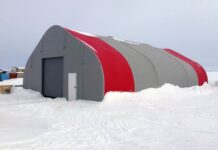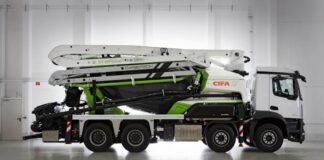The worldwide heating, ventilation, & air conditioning- HVAC controls market size happened to be $18.49 billion last year, and it is anticipated to register a quick revenue CAGR of 9.5% in the 2032 forecast period. The quick integration of IoT within HVAC systems, the rising adoption of smart thermostats in HVAC system manufacturing, and the strategic initiatives as well as policies executed by governments across various nations in order to promote energy-efficient buildings happen to be major focus that drives heating, ventilation, and air conditioning controls market revenue surges. With the aid of IoT, businesses can go on to automatically track as well as manage the functionality as well as state of their HVAC systems.
It is well worth noting that preventive maintenance, remote system tracking & control, energy efficiency, regulatory compliance, as well as recurring service plans happen to be the five main ways in which businesses can use IoT so as to enhance their functionality. HVAC professionals can go on to adopt a more condition-based way of going about things to preventive maintenance with the integration of the IoT sensors. The contractors can go on to access as well as evaluate real-time data that sensors go on to collect from the HVAC systems, as well as upload it to a platform based on the cloud. When an issue gets identified, like an efficiency decrease, a surge in power usage, or even an increase when it comes to vibration, technicians can go on to review the inferences and often diagnose the challenge remotely.
Significantly, the definition of HVAC control systems can differ depending upon whether they are being used for a very simple residential application or may be a very complex, large-scale application. That said, in general, HVAC controls happen to be defined as devices that regulate the operation of HVAC equipment. Typically, a thermostat that gets attached to a self-contained air conditioning unit can be often found in homes. One can manage the functions of the standalone device by altering the setpoint. For example, if one sets the thermostat to 75 degrees in the summer season, the air conditioning will operate until the temperature within touches that level, at which time it will automatically turn off.
One of the recent trends in the market is the popularity of ice-powered air conditioning. In the early 2010s, ice-based air conditioning systems happened to be the most promising market innovations, specifically for households or even business owners looking for methods so as to lessen their energy bills or, for that matter, be more aware. Thus far, it is well to be noted that there has been only one player in the ice air conditioning niche segment: Ice Energy, a company based in California that was founded in 2003 and manufactured air conditioning systems that operated by freezing huge amounts of water at night and then used it in place of refrigerant or compressor systems to cool off the air during the day time.
This idea indeed made sense, in large part, when it came to power grid considerations. Ice Bear, as they were called for commercial buildings, and Ice Cub, for single-family residences, would go on to freeze a tank that’s filled with hundreds of gallons of water during the night when the power demand would happen to be the lowest.
A new HVAC system happens to be a critical financial option for home buyers, as the cost of the device happened to be proportional to its lifespan. Upgrades to control systems as well as the development of innovative HVAC control systems call for large expenditures. This goes on to make the entry into this sector an issue for SMEs. HVAC systems need fine tuning and customized manufacture of parts during the installation so as to operate property and not have any failure. Because of this, specialists are often required for HVAC installation. If in case it is not performed by experts, then the end user could very well have to spend more when it comes to long-term repairs as well as operations. Moreover, the requirement of skilled labor happens to be added to the cost of installation of the system. Hence, it can go on to restrain the execution of HVAC and also market revenue progress.
System insights
The ventilation control system is anticipated to account for majorly large revenue shares in the worldwide HVAC controls market across the forecast period till 2032.
Based on the system, the HVAC controls market is segregated into temperature control systems, humidity control systems, ventilation control systems, as well as integrated control systems. The ventilation control systems are anticipated to account for a large revenue share when it comes to the global HVAC control segment in the forecasted period. This is because of the rapid adoption of high-performance HVAC systems, which help enhance the air quality across healthcare facilities. A well-designed ventilation system is a major aspect of any HVAC unit that makes sure of improved quality without hampering performance as well as energy efficiency. Besides, raising the consumer awareness with regards to the benefits of mechanical ventilation control is yet another important factor that drives the growth of this segment.
It is worth noting that the ventilation control system helps in elevating energy efficiency and also regulating the temperature within the room.
Implementation-Type Insights
The new construction vertical is expected to register constantly fast revenue progress when it comes to the global HVAC controls market across the forecast period- 2032.
Based on the implementation type, the HVAC controls market happens to be segmented into new construction as well as retrofit markets. This new segment is expected to register a steady and fast revenue growth rate in the HVAC controls market over the said forecast period. This is because of the numerous benefits a newly constructed HVAC system comes with. Notably, the HVAC contractors can go on to assist in gauging the ideal ductwork size, placement, as well as location across the building process so as to offer balanced air pressure between supply and return channels.
Regional Insights
It is well to be noted that the North American market comprised of the largest revenue share within the international HVAC controls market in 2022. This is because of the increasing activities of major market players across the countries within the region. The Asia Pacific market, on the other hand, is expected to register the fastest growth when it comes to this segment due to the increased activities of the major market players that exist in the region.
Prominent companies and a competitive landscape
The international HVAC controls market happens to be consolidated, with numerous large as well as medium-sized players accounting for the majority of the market share. Prominent players are deploying numerous strategies, getting into mergers and acquisitions, strategic contracts, testing, development, and also coming up with more effective HVAC controls. Some of the major players that happened to be included in the global HVAC controls market are:
- Johnson Controls International PLC
- Honeywell International Inc.
- Carrier Global Corporation
- Siemens AG
- Emerson Electric Co.
- Trane Technologies PLC
- Daikin Industries, Ltd.
- Schneider Electric
- Delta Controls
- Lennox International Inc.




































